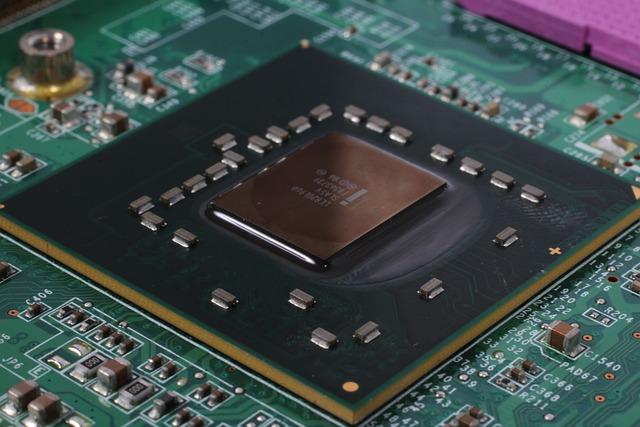As pet owners, we constantly strive to ensure the safety and well-being of our furry companions. In the quest to keep our dogs secure, microchipping has emerged as a popular solution, offering a sense of reassurance that, should they wander too far, they can be safely returned home. However, the decision to microchip your beloved pet often comes with a series of questions and concerns. Is the procedure truly safe? What are the potential risks involved? In this article, we will explore the ins and outs of microchipping your dog, providing you with the information needed to make an informed and confident decision. Let’s embark on this journey together, ensuring that our loyal friends are protected and cared for in the best possible way.
Understanding the Microchip: How It Works and What It Does
At the heart of every pet microchip is a tiny piece of technology that functions similarly to a barcode scanner at a grocery store. These chips, roughly the size of a grain of rice, are passive RFID (Radio Frequency Identification) devices. They are designed to remain inactive until they are scanned by a microchip reader, which emits a low-frequency radio signal to power the chip. Once activated, the chip transmits a unique identification number back to the reader. This number is then used to access the pet owner’s contact information from a secure database. Here’s a quick breakdown of what these chips do:
- Identification: Provides a permanent ID that links your pet to you, unlike collars or tags that can be removed or lost.
- Reunification: Enhances the chances of reuniting lost pets with their owners by allowing shelters and vets to quickly retrieve your contact details.
- Security: Helps prove ownership in case of disputes or theft, offering peace of mind to pet owners.
While the technology might seem complex, it operates on a simple principle: a reliable method of connecting pets to their owners. With its passive nature, the microchip does not emit signals on its own and does not require a power source, making it a safe and long-lasting solution for pet identification. However, it’s essential to ensure that the information linked to the chip is kept up-to-date, as this is crucial for the system to work effectively.

Addressing Safety Concerns: Potential Risks and Myths Debunked
When considering microchipping your dog, it’s important to address common safety concerns and separate fact from fiction. Microchips are designed to be a permanent form of identification, implanted just beneath your dog’s skin. While some pet owners worry about potential health risks, extensive research and veterinary consensus affirm that microchipping is generally safe. The chips are made from biocompatible materials, minimizing the risk of allergic reactions or rejection.
Here are a few myths debunked:
- Myth: Microchips can track your dog’s location.
Reality: Microchips are not GPS devices; they only provide identification when scanned by a compatible reader. - Myth: The implantation process is painful for dogs.
Reality: The procedure is quick and similar to a routine vaccination, causing minimal discomfort. - Myth: Microchips can cause cancer.
Reality: Scientific studies have shown no causal link between microchips and cancer in pets.
microchipping remains a safe and effective way to ensure your furry friend can be identified and returned to you if lost.

Choosing the Right Microchip: Factors to Consider for Your Pets Safety
When selecting a microchip for your beloved canine, it’s crucial to consider a few key factors that ensure their safety and well-being. Compatibility is one of the first things to verify. Make sure the microchip you choose is universally compatible, meaning it can be read by scanners used in most veterinary clinics and animal shelters. This ensures that if your dog gets lost, they can be easily identified and returned to you. Additionally, registration is vital. Choose a microchip company that provides a reliable and easy-to-update registration service, allowing you to keep your contact information current. This ensures that if your pet is found, the correct information is readily available.
Another essential aspect to consider is the reliability and reputation of the microchip brand. Look for brands that are well-reviewed and have a proven track record of success. Consider the size and material of the microchip as well; smaller chips are less invasive and cause less discomfort to your pet. It’s also beneficial to check if the microchip comes with any additional services, such as pet recovery support or online tracking, which can offer peace of mind. By carefully evaluating these factors, you can make an informed decision that prioritizes your pet’s safety and comfort.

Steps to Ensure a Smooth Microchipping Experience for Your Dog
To ensure a positive experience for both you and your furry friend, it’s essential to approach the microchipping process with care and preparation. Begin by selecting a reputable veterinarian or animal shelter with experience in microchipping. This will not only guarantee the procedure is performed correctly but also provide peace of mind knowing your pet is in capable hands. Before the appointment, double-check your dog’s records to ensure they are up-to-date on vaccinations, which can help prevent any potential complications.
On the day of the procedure, consider the following tips to keep your dog comfortable and relaxed:
- Stay calm and positive: Dogs often pick up on their owner’s emotions, so maintain a soothing demeanor to help alleviate any anxiety your pet might feel.
- Bring a favorite toy or blanket: Familiar items can provide comfort and distraction during the procedure.
- Offer a treat: Rewarding your dog with a treat post-procedure can create a positive association with the experience.
- Schedule a follow-up: Arrange for a quick check-up to ensure the microchip is functioning correctly and to address any concerns you may have.
By taking these steps, you’ll help ensure that microchipping is a smooth, stress-free experience for your beloved canine companion.

